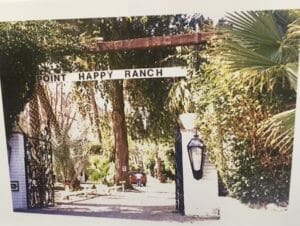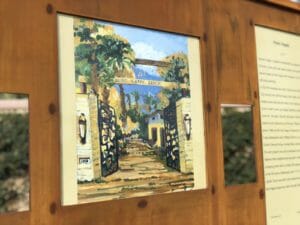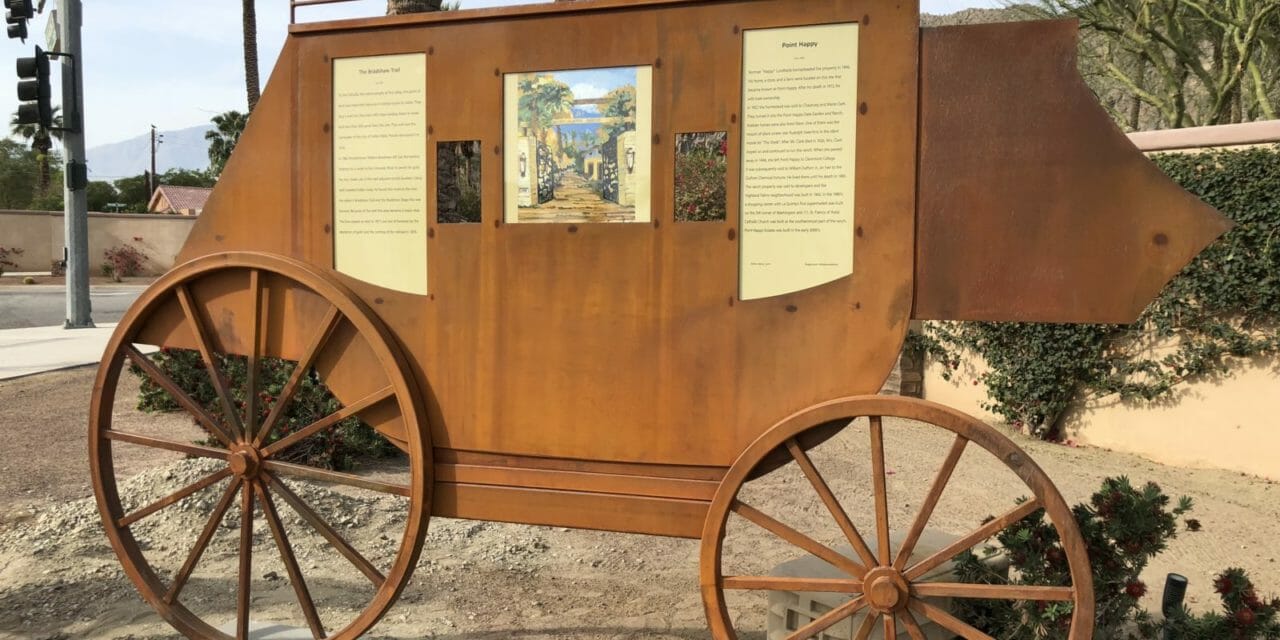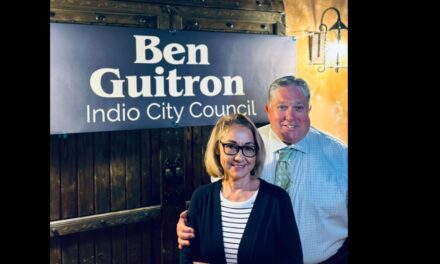On the southwest corner of the intersection of Highway 111 and Washington Street in La Quinta, also featured as the familiar gateway to the city of La Quinta, is a stretch of land backed by mountains that houses businesses and restaurants. Beyond this lies additional land where Highland Palms was built in 1964, Point Happy Estates built in the early 2000s, and on the furthest southern point of the property the St. Francis of Assisi Catholic Church was established.
 Few people know that when they turn into the Plaza at Point Happy to shop at Vons or eat at the Beer Hunter, they are entering a sacred area that once contained nothing but raw desert and a special underground water source where the Cahuilla Indians, the native people of what is now known as Coachella Valley, dug a nearby well. The Cahuilla Indians had resided on these desert lands hundreds of years until 19th century explorers and missionaries, followed by those seeking gold on the Arizona side of the Colorado River, invaded the territory.
Few people know that when they turn into the Plaza at Point Happy to shop at Vons or eat at the Beer Hunter, they are entering a sacred area that once contained nothing but raw desert and a special underground water source where the Cahuilla Indians, the native people of what is now known as Coachella Valley, dug a nearby well. The Cahuilla Indians had resided on these desert lands hundreds of years until 19th century explorers and missionaries, followed by those seeking gold on the Arizona side of the Colorado River, invaded the territory.
A frontiersman, William Bradshaw from San Bernadino, in 1862, while trying to find a route to the Colorado River during the goldrush, made use of the Cahuilla Indian’s plentiful well. From there he traced his way to the Colorado River by using well-traveled Indian Trails. This route became known as the Bradshaw Trail and a stagecoach line by the same name was started to transport prospectors to mining sites. The Cahuilla Indian’s well became a major stop along this popular route until the mines were eventually depleted. The well was destroyed by floods in 1916.
 With the building of railroads and the discovery of the rich underground waterways, suddenly what was thought of as a desolate and inhospitable desert terrain, attracted scores of homesteaders interested in growing crops. One of those homesteaders was Norman “Happy” Lundbeck, who, in 1906, who obtained the property. He added a home, a store, and farmed the land until his death in 1913. His land was called Point Happy. The property was sold to Chauncey and Marie Clark, who created the Point Happy Date Garden and Ranch, along with an Arabian horse breeding facility. Chauncey died in 1926 and his wife in 1948. The property was willed to Claremont College and subsequently sold to William DuPont, who owned it until his death in 1965. Finally, it was then sold to developers.
With the building of railroads and the discovery of the rich underground waterways, suddenly what was thought of as a desolate and inhospitable desert terrain, attracted scores of homesteaders interested in growing crops. One of those homesteaders was Norman “Happy” Lundbeck, who, in 1906, who obtained the property. He added a home, a store, and farmed the land until his death in 1913. His land was called Point Happy. The property was sold to Chauncey and Marie Clark, who created the Point Happy Date Garden and Ranch, along with an Arabian horse breeding facility. Chauncey died in 1926 and his wife in 1948. The property was willed to Claremont College and subsequently sold to William DuPont, who owned it until his death in 1965. Finally, it was then sold to developers.
Recently, the City of La Quinta along with the La Quinta Historical Society, added a special steel art piece in the shape of a stagecoach dedicated to the fascinating history of Point Happy. It is aptly called “Stagecoach” and it was created by designer Kathleen Smith Schooley of Metalrevalations with an added painting in the center of the sculpture created by artist Nancy Lynn.
“The Historical Society started recognizing historic sites with these arts projects to educate the community about the City of La Quinta’s past with the hope that they would come to value its history,” said Linda Williams, President of La Quinta Historical Society. “Point Happy is the oldest settlement in the city and we are delighted to honor it.”
For more information about this project and Point Happy’s history please call the Historical Society at 760-564-1283 or click HERE.





![Enrolling Now, Rewarding Careers Ahead [Sponsored]](https://ukenreport.com/wp-content/uploads/2024/04/COD_heroes_1-1385-2-440x264.jpg)

